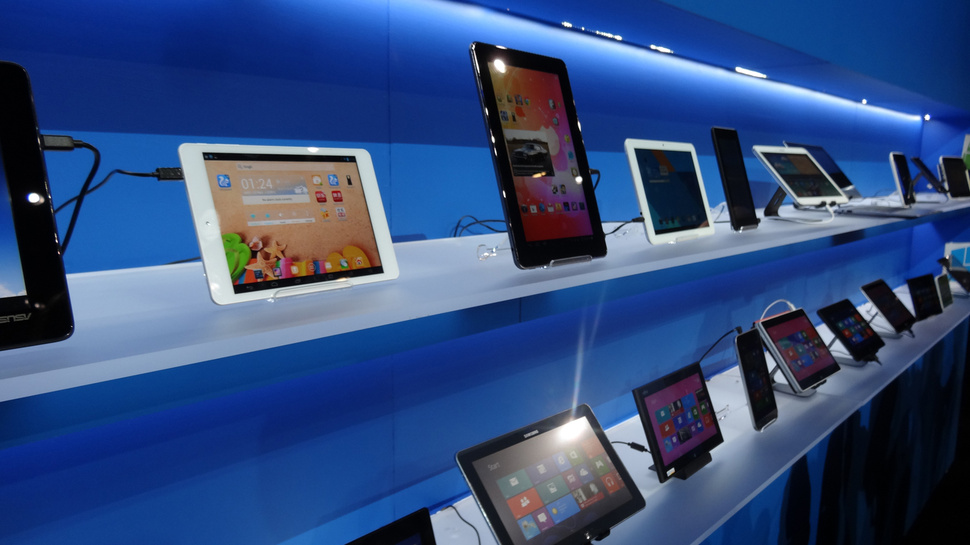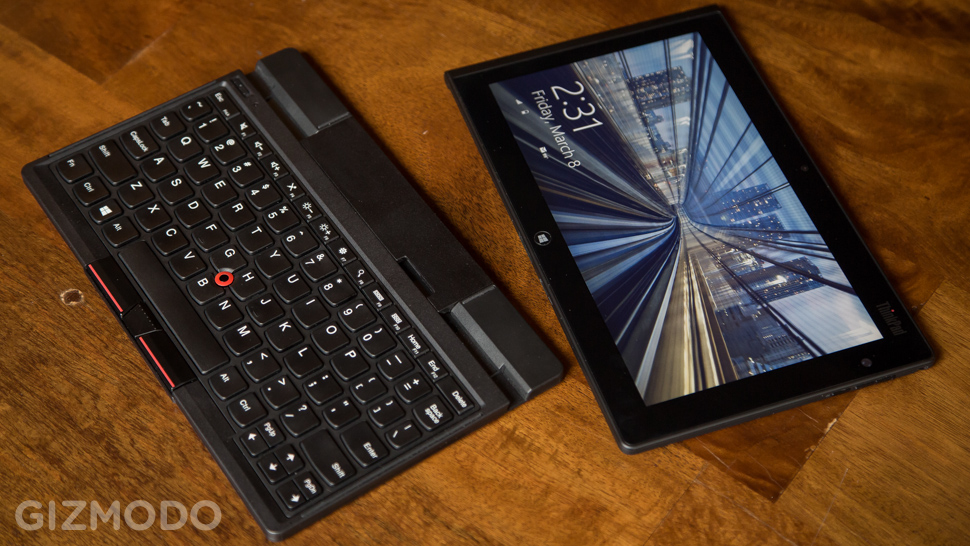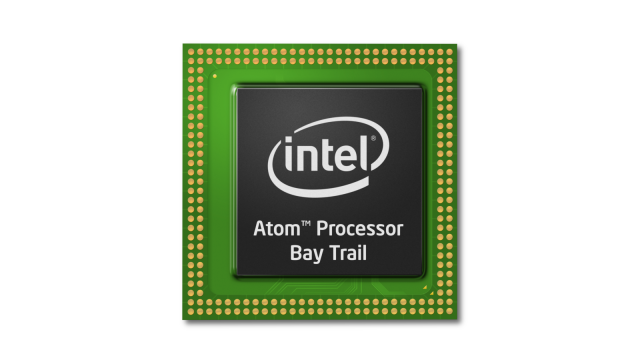Just a couple of months ago, Intel’s new 4th generation processors helped laptops get a whole lot better. Now Intel’s trying to work the same magic on mobile. Meet Bay Trail, a new flavour of chips designed specifically to make Windows 8 and Android tablets more awesome.
Bay Trail is Intel’s newest Atom chip…
Bay Trail is Intel’s pet name for its newest system-on-a-chip (SoC) designed for tablets, officially the Atom Z3770 line. These are tablet brains. Bay Trail chips are 1.5GHz quad-core suckers, the first to use Intel’s new Silvermont architecture which was designed specifically from the ground up with tablets (and phones) in mind. So they’re good tablet brains.
Bay Trail chips are 22nm, shrunken down from Clover Trail’s 32nm, and they support the 64-bit version of Intel’s x86 architecture, like full-fledged laptops do, instead of the 32-bit version Clover Trail was stuck with. In other words they’re more like laptop brains then ever, and that’s going to give them laptop-like power.
…that lives in tablets and convertibles…
While Intel’s got a pretty solid stranglehold on the PC CPU market, most phones and tablets run on Qualcomm and Nvidia brains, like Snapdragon and Tegra (respectively). Intel started elbowing its way into the market a little more with its Clover Trail chips last year with a bunch of tablets and convertibles that didn’t exactly take off. Bay Trail is the next push that Intel is hoping will make for killer convertibles, and let them finally get into the pure tablet market. They’ve been trying for years.
Traditionally, Atom cores made their homes in (ugh) netbooks. Tiny clamshells and even bigger low-end laptops are still Atom territory, but now they’re hanging out in more and more Windows 8 (and Android) detachables, bringing pure-tablet and pure-laptop worlds a little closer together. And maybe we’ll see some Bay Trail-powered pure tablets that can hang with their ARM and Nvidia contemporaries. Maybe.

…and adds twice the CPU power and a laptop GPU to last year’s model…
Bay Trail offers twice the CPU performance and three times the graphical performance of the old Clover Trail chips. What that means is that detachables might finally have the chance to grow up from almost-laptops into devices that can actually edit video, run games, and perform other processor-intensive tasks without feeling inherently gimped the whole time.
Bay Trail chips are a step up in graphics power too; they actually have the same integrated graphics that last year’s laptops did.
…thanks to new transistors and power-juggling tricks…
In part, Intel attributes the increased power of Bay Trail chips to the 3D transistors it’s been prepping for years. It’s these little guys that are unleashing the potential for these new SoC’s to actually outrun Moore’s law.
Then there’s what Intel calls “Burst Technology 2.0.” Bay Trail chips don’t just work with more power, they can also juggle it more effectively than ever. Instead of just running everything at full power all the time, Bay Trail chips have the ability to scale down some parts of the system, while scaling up others dynamically, all depending on what you need at any given moment.
If you’re editing photos, Burst 2.0 lets the chip scale down the CPU and kick the GPU into high gear. The end result is that the hardware can accomplish more with less, and give the overall impression that the system is good at everything. And it is; just not all at the same time. It’s this kind of smoothing over that could really stand to minimise the jank Atom cores have been stuck with in the past.
…but it’s stuck with the same old battery life…
Unfortunately Bay Trail isn’t bringing the same sort of battery life upgrades as Intel’s 4th gen laptop chips did. Instead, Intel’s expecting battery life for the new devices to hold steady around 10 hours of active life, and three or so weeks of standby time. That’s not bad for a laptop, but for a tablet it’s a little less exciting.

When you’re trying to get the best of laptop and tablet worlds, getting tablets and detachables up to par with laptops in computing power is just one half the battle. The other is holding onto that long tablet battery life we’ve come to know and love. Bay Trail’s doing well on that first one, but 10 hours still isn’t much for a tablet.
…and it’s coming to a device near you.
Intel’s got a whole bunch of OEMs on board to put out new devices sporting Bay Trail chips before the end of the year, like Acer, ASUS, Dell, Lenovo and Toshiba. The biggest, most powerful Bay Trail devices will probably top out around 11mm thick and 1kg (roughly a Surface Pro) and cost around $US200 for a clamshell, $US250 for a full notebook-style device, and $US350 for a 2-in-1 detachable. And on the lowest end of the spectrum, Intel says Bay Trail can support $US200 fanless tablets.
The bottom line is that with Bay Trail, smaller, more mobile devices, and touchscreen convertibles are take a big stride towards being able to compete on the same sort of playing field as laptops. No, they’re not going to as good as top of the line machines, or even go toe-to-toe with modern mid-range boxes, but they’ll start catching up by being as good as full-fledged laptops were a year or two ago, with the extra bonus of mobility and/or the power to transform, all at a pretty damned low price. It’s something worth getting excited about.
